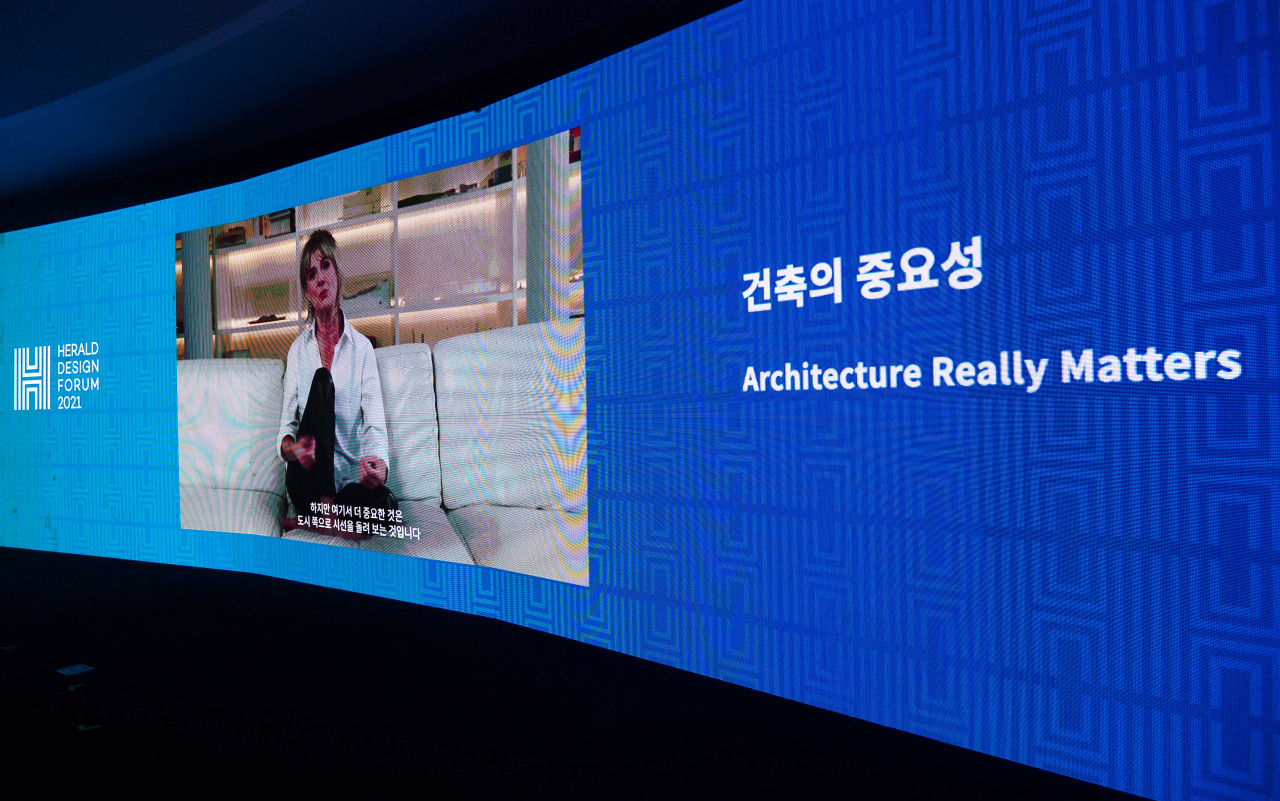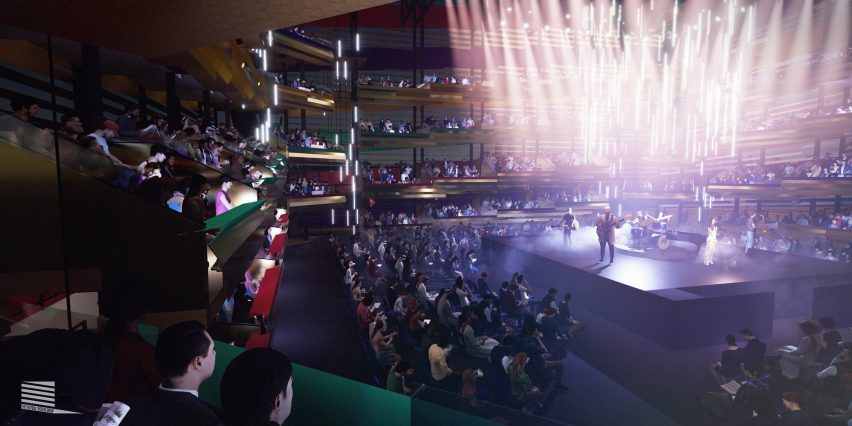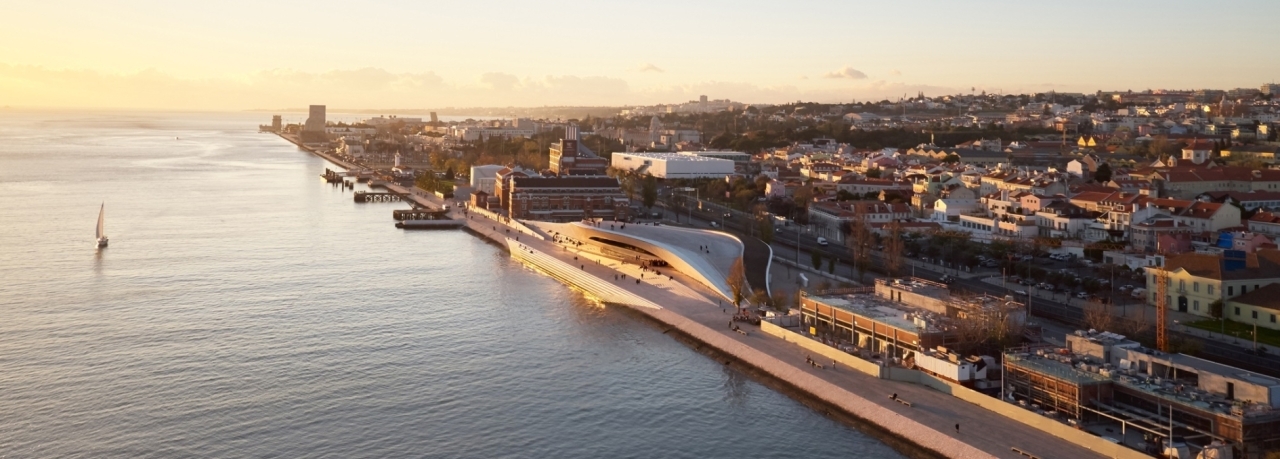 |
British architect Amanda Jane Levete gives online speech at the Herald Design Forum on Thursday. (Lee Sang-sub/The Korea Herald) |
Ray Winkler, design director of Stufish Entertainment Architects, and British architect Amanda Jane Levete on Thursday shared their visions on what changes the COVID-19 pandemic has brought to the field of architecture and what architects can do in the post-pandemic era at the Herald Design Forum 2021.
Winkler showed a glimpse into how architecture can adapt accordingly with the changes brought by the pandemic, while Levete showed what values architecture should continue to pursue.
“Technology is progressing. The way media disseminates the information, how people consume entertainment are ever-changing, but nothing quite as drastic as the pandemic,” Winkler said, joining the forum in Seoul via virtual link.
During his speech, Winkler introduced the Vertical Theatre, a new live performance venue created by Vertical Theatre Group, a collective of producers and technical specialists led by Stufish.
Winkler said the building has been designed to minimize human interactions among the audience. They are guided to enter the theater from four corners of the structure and to enter their opera boxes that are physically separated from another. The live performance structure is also equipped with a ventilation system that allows fresh air to flow through to reduce the risk of spreading the COVID-19 virus.
 |
A view of the Vertical Theatre (Stufish Entertainment Architects) |
“I think it’s pretty clear that we can’t just continue the way we’ve done in the past, and I think that as entertainment architects and designers, we have a responsibility to come up with solutions to the way we do things that are very different to the way we have done things in the past.”
Levete, who founded architecture studio AL_A in London, emphasized that architecture will continue to “show a commitment and a belief in the future.”
During her speech, Levete predicted that public spaces will become ever more important in these pandemic times and afterward. Architecture can help create public spaces in buildings and other places to help people have a sense of community.
Levete introduced her project at the Museum of Art, Architecture and Technology in Lisbon, Portugal, located on the bank of the Tagus.
Through the project, Levete and her team renewed access to the Tagus River and the museum from the city, which were previously cut off by eight traffic lanes and a railway that stretches between the waterfront and the inland residential district.
The newly designed museum now allows people to walk over the building and access the museum and river through a new footbridge over the railway tracks.
Levete and her team have created a new public space on the roof as well, which made the historic museum among the most-visited exhibition spaces in Portugal.
 |
The public courtyard and new entrance to the Victoria & Albert Museum in London (Courtesy of Hufton Crow) |
Levete also shared her team’s nanotechnology-inspired research project aimed to develop a new construction material -- transparent wood -- operated in a collaboration with Oxford University.
“If we can reconcile nature and technology, perhaps one day we can find a way to build that is positive for our environment,” Levete said.
By Shim Woo-hyun (
ws@heraldcorp.com)










